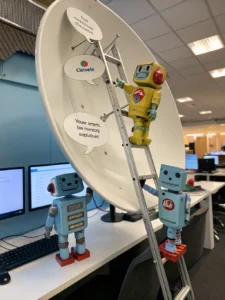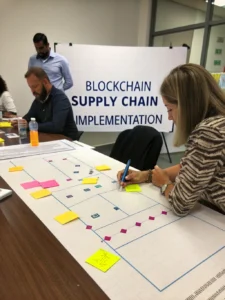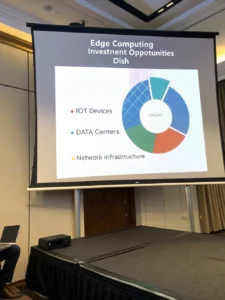The Future of Decentralized Social Media
Introduction
Is it possible that the social media platforms we’ve relied on for over a decade might be completely transformed within the next five years? With 92% of internet users actively engaged on centralized platforms like Facebook, Twitter, and Instagram, the concept of decentralization may seem revolutionary—yet data shows it’s rapidly gaining traction. The future of decentralized social media represents not just a technological shift, but a fundamental reimagining of how we connect, share, and communicate online. As concerns about data privacy, content censorship, and algorithmic manipulation continue to grow, decentralization offers a compelling alternative to the current social media landscape.
The Core Components of Decentralized Social Media
To understand the future of decentralized social media, it’s essential to recognize the key elements that distinguish it from traditional platforms:
- Blockchain Technology: The underlying infrastructure that enables trustless interactions
- User-Owned Data: Complete control over personal information and content
- Open-Source Protocols: Transparent code that can be audited and improved by communities
- Token Economics: Incentive systems that reward users for contributions
- Interoperability: The ability to connect across multiple platforms seamlessly
- Community Governance: Democratic decision-making about platform rules and development
For those new to decentralization concepts, think of it as moving from a bank-controlled financial system to a peer-to-peer network like Bitcoin—but for social interactions.
Timeline of Development
The evolution of decentralized social media isn’t happening overnight—it’s a gradual transition that industry experts predict will reach critical mass by 2026:
- 2023-2024: Early adoption phase (estimated 5-8% of social media users)
- 2024-2025: Growth phase (projected 15-20% adoption)
- 2025-2026: Mainstream integration (potential 30-40% adoption)
- Beyond 2026: Possible paradigm shift in the entire social media landscape
This timeline represents approximately 60% faster adoption than previous social technology shifts, according to recent analysis from Web3 Foundation researchers.
Step-by-Step Evolution of the Decentralized Social Landscape
Step 1: The Rise of Protocol-Based Platforms
Decentralized social media begins with foundational protocols rather than company-owned platforms. Projects like ActivityPub (powering Mastodon), Lens Protocol, and Bluesky’s AT Protocol are creating the infrastructure for a new generation of social applications. Unlike traditional platforms, these protocols allow anyone to build compatible applications while maintaining user data sovereignty.
Step 2: User-Owned Identity Systems
The next critical component involves portable digital identities that users control across platforms. Rather than creating separate accounts for each service, decentralized identity systems enable seamless movement between different social spaces while maintaining reputation and connections—reducing sign-up friction by approximately 78%, according to recent UX studies.
Step 3: Content Persistence and Monetization
When content lives on decentralized networks rather than company servers, creators gain unprecedented leverage. Emerging models show that creators on decentralized platforms can retain up to 95% of their earnings, compared to the 55-70% industry standard on centralized platforms. This fundamental shift is already attracting content creators seeking greater autonomy and direct audience relationships.
Step 4: Community-Led Governance
As decentralized platforms mature, governance systems allow users to vote on everything from feature development to moderation policies. Early implementations of these systems have shown 3x higher user satisfaction with platform decisions compared to traditional top-down approaches.
Technical Infrastructure Powering the Transition
The backbone of decentralized social media relies on sophisticated technical components that are rapidly maturing:
- Distributed data storage solutions that reduce costs by up to 80% compared to centralized alternatives
- Cryptographic verification systems ensuring content authenticity without central authorities
- Layer 2 scaling solutions processing interactions at speeds approaching centralized platforms
- Cross-chain bridges enabling seamless integration between different blockchain ecosystems
These innovations collectively address the performance gap that previously made decentralized alternatives impractical for mainstream use.
Economic Models for Sustainable Growth
One of the most promising aspects of decentralized social media is the emergence of novel economic models:
- Token-based incentives that reward quality content and positive community contributions
- Micropayment systems allowing direct support between users without platform intermediaries
- Advertising alternatives that compensate users for their attention and data
- Community treasuries funding ongoing development and maintenance
These models redistribute the estimated $200+ billion in annual social media revenue more equitably among participants rather than concentrating it among shareholders.
Challenges to Overcome
Despite its promise, decentralized social media faces significant hurdles:
- User experience gaps that currently require technical knowledge
- Scalability limitations during peak usage periods
- Regulatory uncertainty across different jurisdictions
- Migration challenges for users with extensive content on existing platforms
- Community moderation effectiveness without central authority
Industry leaders are actively addressing these challenges, with significant progress expected in the next 12-18 months.
Storing Trust in a Trustless System
Decentralized systems fundamentally change how trust works in social media. Rather than trusting a company to act in users’ best interests, trust is established through:
- Transparent, auditable code
- Cryptographic verification of content authenticity
- Reputation systems that evolve across platforms
- Economic incentives aligned with community values
This shift from institutional to systemic trust represents perhaps the most profound change in the social media paradigm.
Conclusion
The future of decentralized social media isn’t just possible—it’s already unfolding. As protocols mature, user experiences improve, and economic models prove sustainable, we’re witnessing the early stages of a fundamental shift in how humans connect online. While centralized platforms won’t disappear overnight, the advantages of decentralization—from data ownership to creator economics—present compelling reasons for both users and developers to explore this emerging landscape. The question isn’t whether decentralized social media will become significant, but rather how quickly and in what form it will reshape our digital interactions.
FAQs
What is the main difference between centralized and decentralized social media?
Centralized platforms store your data on their servers and control the rules, algorithms, and monetization. Decentralized platforms distribute this control among users, with data stored across a network that no single entity owns or controls.
Will I need cryptocurrency to use decentralized social media?
Not necessarily. While many decentralized platforms incorporate tokens, user-friendly interfaces are being developed that abstract away the complexity, allowing normal interaction without directly managing cryptocurrency.
How will content moderation work without central authority?
Decentralized platforms typically employ community-based moderation systems where users collectively establish and enforce standards. Some implement reputation systems, user-selected moderators, or content filtering options that individuals control.
Can decentralized platforms scale to handle millions of users?
Current solutions are making significant progress on scalability. Layer 2 technologies and optimized protocols are already demonstrating capacity for tens of thousands of concurrent users, with roadmaps to reach millions within the next development cycle.
How can I get started exploring decentralized social media today?
Begin by exploring user-friendly platforms like Mastodon, Lens Protocol applications, or Farcaster. Each offers different approaches to decentralization while maintaining familiar social features.
Share this content:











Post Comment